California Penal Reform And The Violent Criminals It Let Loose
Authored by Ana Kasparian via RealClearInvestigations,
Smiley Martin should have been behind bars.
A career criminal with a long rap sheet involving firearms, he was given a 10 year sentence in 2018 for punching, dragging and severely beating his girlfriend with a belt. In prison, Martin was found guilty of beating another inmate and engaging in other criminal activity. Nevertheless, he was freed just four years later, thanks to a plea deal that categorized him as a “nonviolent offender” and a California ballot measure that sharply reduced sentences for “good behavior.”
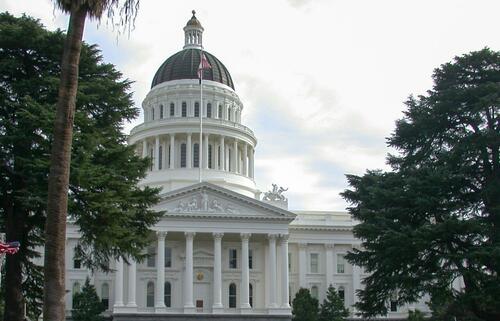
Just two months after his release, Martin and several accomplices, including his brother, were arrested for carrying out the worst mass shooting in Sacramento’s history – leaving six dead and 12 others injured on April 3, 2022. Martin was charged with three counts of murder and illegal possession of a firearm, including a machine gun. He will not stand trial on those charges, since the 29-year-old died in jail of a drug overdose last September.
Martin’s life and death have brought attention to the criminal justice reform that helped put him back on the streets: Proposition 57. The ballot measure was sold to the public in 2016 as a way to relieve the state’s chronically overcrowded prisons by rewarding “nonviolent” offenders for good behavior by shortening their sentences. It was supposed to be a humanitarian answer to what social justice activists described as an epidemic of “mass incarceration.” It has instead put tens of thousands of violent offenders such as Martin back on the streets.
Many of them have been rearrested. The latest Recidivism Report from the California Department of Corrections and Rehabilitation shows that nearly two thirds (64.2%) of the 34,215 inmates granted early release between July 1, 2019 and June 30, 2020 had been rearrested as of April 2, 2025.
Breaking down the recidivism rate for prisoners within three years of their release, it reported that “22.1% of the release cohort (7,567 individuals) were convicted of a felony offense, and 17.0% (5,828 individuals) were convicted of a misdemeanor offense.” The Department of Corrections also reports almost half the inmates granted early release had not earned any credits for good behavior.
Prop 57 critics are not surprised. In the run-up to the 2016 ballot measure – which was approved with the support of 65% of voters – the measure’s opponents warned that violent criminals like Martin would likely benefit from the initiative.
But they were denounced as scaremongers. When Sacramento County District Attorney Anne Marie Schubert warned that Prop 57 would free perpetrators of domestic violence, then-Gov. Jerry Brown, who was the top proponent for the ballot measure, shot back; “That’s a complete red herring, and it’s very disingenuous of these highly politicized prosecutors to make that claim.” Brown assured voters that each inmate’s crime and behavior in prison would be considered before release was granted.
While supporters of Prop 57 described it as a humane response to a court order, critics say its proponents misrepresented the bill to secure its passage. At a time when President Trump is putting progressive criminal justice organizations in his crosshairs, the troubled history of Prop 57 highlights the challenges of rehabilitating inmates while also reducing prison overcrowding without building more prisons.
Gov. Jerry Brown's Role
The single most aggressive advocate for Prop 57 was former Democratic Gov. Brown, who had to contend with the consequences of a sentencing reform he had signed in 1976 during his first stretch as governor, when tough-on-crime measures were enacted. Now decades later, with Brown governor again, California’s prisons were housing nearly double the capacity of inmates they were built for. Facilities were so severely overcrowded that the U.S. Supreme Court found their conditions violated inmates' Eighth Amendment Constitutional protections against cruel and unusual punishment. In May 2011, months following Brown’s inauguration, the court ruled in a split decision that the state must remedy the issue.
In writing for the five-member majority, Justice Anthony Kennedy argued that the state’s prison system was stretched so thin that it failed to provide basic medical care, which, as he wrote, was "incompatible with the concept of human dignity and has no place in a civilized society.” Citing how one prisoner was dying every week due to deficient medical care, Kennedy declared that the courts "must not shrink from their constitutional obligation to enforce the rights of all persons, including prisoners.”
At the prison population’s peak in 2006, more than 165,000 inmates were locked up in a system meant to handle 85,000. But budgetary pressures meant that the state legislature wasn’t willing to allocate the funding necessary to build more space to house inmates. So, the court ordered them to reduce the prison population by 30,000 inmates in order to limit overcrowding to 137% capacity. While there is no specific constitutional level for overcrowding, the majority opted to give California a little more wiggle room than the 130% capacity recommended by the Federal Bureau of Prisons.
Brown, eager to get federal oversight off his back, joined the state legislature and sprung into action with the passage of AB109, which transferred inmates from crowded state detention facilities into county jails. But some county jails were riddled with the same problems and lacked the capacity to house an influx of inmates. With resources stretched thin, counties began releasing criminals years before they served their sentences.
By 2014, a Los Angeles Times investigation found more than 13,500 inmates were being released early from county jails each month across the state. Although the public was assured that only those who posed little danger were let go, data shows that some counties completely halted incarceration of those convicted of crimes like domestic violence and child abuse.
The early release of convicted sex offender Sidney DeAvila was one particularly gruesome example of the unintended consequences of AB109. After DeAvila was let out early from San Joaquin County Jail in February 2013, he went on to rape, kill and dismember his 76-year-old grandmother.
Undeterred by the impact AB109 had on public safety, Brown later campaigned for Prop 47, a 2014 ballot measure that was advertised to Californians as simply lowering penalties for nonviolent crimes like petty theft and drug possession. But the public was left in the dark about how the measure would also lower penalties for car thieves, drug traffickers and open-air drug markets.
Nevertheless, Brown began promoting additional reforms aimed at lowering California’s prison population.
Officially known as the Public Safety and Rehabilitation Act of 2016, Prop 57 would, according to Brown, address the state’s prison overcrowding problem while keeping communities safe. Brown pitched the measure as an enlightened step that “orients the prison toward rehabilitation” while appreciating the human capacity for change. “All of us learn. I’ve learned in 40 years,” Brown said at the time. “I think prisoners can learn.”
But Brown also assured voters there were limits to his progressive vision. He repeatedly noted the ballot measure’s language that only people “convicted of a nonviolent felony offense and sentenced to state prison shall be eligible for parole consideration after completing the full term for his or her primary offense.” Brown told the Mercury News newspaper in 2016 that“we had planned to offer parole to violent offenders, but we took that out.”
Brown estimated that only about 1,100 prisoners per year would qualify for the program. Prosecutors who opposed the measure in the run-up to the vote also underestimated the number of beneficiaries when they pegged it at 16,000.
Critics, including some law enforcement groups, district attorneys, and victims’ advocates, argue that Brown’s miscalculation was part of an effort to mislead voters about Prop 57’s reach. Despite repeated assurances that violent criminals would not qualify for early release under the measure, the legislature's previous crime reclassification efforts meant that only 23 specific crimes – such as murder, rape, arson and carjacking – were considered offenses that would disqualify prisoners from the measure’s benefits. Many crimes the public would consider violent, including Smiley Martin severely beating his girlfriend, are not included on that list.
“Dozens of serious crimes would be considered non-violent for parole purposes,” warned CalMatters columnist Dan Walters, including “assault with a deadly weapon, soliciting murder, intimidating or harming a crime victim or witness, resisting arrest that injures a police officer, violent elder or child abuse, arson with injury, human trafficking and several forms of manslaughter.”
Plea bargains also make some violent criminals eligible for early release. Martin, for example, was originally charged with kidnapping, which is identified as a violent offense in the penal code. But that charge was withdrawn in his deal.
Brown also assured voters that felons who had been convicted of various sexual crimes would not be considered for early release. However, rape of an unconscious person, sex trafficking and even the trafficking of children for sex are not considered violent felonies according to California’s Penal Code. In confirming the deceptive criminal classifications in the state, Attorney General Rob Bonta told CalMatters that these crimes “should be discussed and potentially changed under whatever the appropriate means is for Prop 57.”
The state legislature agreed with Bonta on the prosecution of child sex predators. Soliciting minors under the age of 16 for sex was considered a misdemeanor in California up until September 2024, when Gov. Gavin Newsom finally signed legislation reclassifying it as a felony with tougher penalties. Previously, soliciting a minor for sex, or paying for it, was simply a misdemeanor punishable by two days in jail and a $10,000 fine.
In 2021, California’s Supreme Court weighed in on Prop 57 and unanimously sided with those who had argued that Brown falsely portrayed the measure’s reach. In writing the unanimous decision, Chief Justice Tani Cantil-Sakauye stated that “there are portions of [Prop 57’s] opponents’ argument that the [Corrections] Department must concede were correct, including the characterization that individuals convicted of and currently serving sentences for offenses … like assault with a deadly weapon would be eligible for nonviolent offender parole consideration, or that an individual with a prior violent felony conviction for murder would not be excluded from nonviolent offender parole consideration.”
The Chief Justice addressed how perpetrators of serious sex crimes were also qualifying for early release under the measure. She wrote that “the initiative’s language provides no indication that the voters intended to allow the [Corrections] Department to create a wholesale exclusion from parole consideration based on an inmate’s sex offense convictions when the inmate was convicted of a nonviolent felony.”
While the Court didn’t mention Gov. Brown by name, his promotion of the ballot measure was subtly cited by the Chief Justice. “Had the drafters of Proposition 57, and by extension the voters, intended to exclude inmates from nonviolent offender parole consideration based on prior or current sex offense convictions,” the Chief Justice wrote, “it would have been a simple matter to say so explicitly.”
The court’s ruling made little difference, because mere weeks before its decision, voters overwhelmingly rejected another poorly written ballot measure that was supposed to close the violent crime loophole in Prop 57. The measure, known as Proposition 20, sought to alter Prop 57 by denying early release to perpetrators of violent crimes that had not been listed in the California Penal Code.
However, the measure was misleadingly described as limiting “access to parole programs established for nonviolent offenders.” In other words, there was a fundamental problem with using the word “nonviolent” to describe the gaps in Prop 57 that the measure sought to remedy. Most voters were unaware that the state penal code listed violent crimes like the rape of a unconscious person as nonviolent offenses. So, they were under the impression that Prop 20 sought to impose harsh punishments for petty crimes, which many in liberal California are against.
Prop 20’s timing may have also led to its demise. Voters decided on the measure in the aftermath of George Floyd’s 2020 murder while in the custody of Minneapolis police and the country was amid what many referred to as a “racial reckoning.” The country, and especially liberal states like California, were less interested in public safety and more open to criminal justice reforms due to concerns over mass incarceration and what they saw as racist policing.
Credit Where Credit Wasn’t Due
Even if voters had been aware that those found guilty of trafficking children or strangling their wives would still be eligible for early release under Prop 57, no one was under the impression that felons would have their sentences cut short without enrolling in rehabilitation programs or earning good behavior credits. However, the latest CDCR report discloses that of the 34,215 inmates who were released early in fiscal year 2019, 13,833 did not earn any enhanced behavior credits to justify a reduction in their prison sentence. Some 44% of those who didn’t earn any credits would be convicted of a new crime following their release.
Even more damning is that the CDCR’s report concedes that the state released “high risk” inmates who are more likely to reoffend. Based on the California Static Risk Assessment (CSRA), a tool used to calculate the risk of a parolee committing a new crime, “high, moderate, and low-risk individuals recidivate at about 60 percent, 40 percent, and 20 percent, respectively.” Yet in fiscal year 2019, “approximately 41.2 percent of individuals in the release cohort have a high-risk score according to the CSRA.”
Indeed, many of the inmates who were released under Prop 57 in 2019 went on to reoffend and get convicted of new crimes (44.0%). However, there were fewer convictions for those who did earn rehabilitative credits in prison (35.8%).
Of the 39.1% of parolees in fiscal year 2019 who were convicted of other crimes within the first three years of their release, 22.1% were for felonies and 17% for misdemeanors. But only 17.4% of the convicted felons returned to prison. Even so, according to the report, “the percentage of individuals returned for crimes against persons increased by 2.9 percentage points, the largest increase of any return type.”
While overcrowding was the very issue that led to measures like Prop 57, state officials have shuttered several state prisons in recent years. Four were closed in 2021 alone, and it appears that state officials are intentionally avoiding prison time for convicts because their objective is to close more for fiscal and ideological reasons.
A local Los Angeles publication reported last spring that “because of the declining inmate headcount, California can close up to five more of its 33 prisons and eight yards within operating prisons while still complying with a federal court order that caps the system’s capacity.” According to the Legislative Analyst’s Office, the state could save up to $1 billion a year by doing so. The cost to the public’s safety when there’s nowhere to detain perpetrators of violent crimes was not factored into its analysis.
By November 2024, many Californians were fed up. More than 65% of Alameda County voters approved the recall of Oakland’s progressive District Attorney Pamela Price. Similarly, Los Angeles denied a second term to D.A. George Gascon, another criminal justice reformer. Gascon was replaced with his tough-on-crime challenger Nathan Hochman. Finally, nearly 70% of voters approved Proposition 36, which would reverse an earlier ballot measure that weakened punishments for certain offenses like shoplifting and drug crimes, including trafficking.
Gov. Gavin Newsom was, and still is, vehemently against Prop 36, citing the financial burden of holding criminals accountable in one of the highest taxed states in the country. Nonetheless, Prop 36 is “an unfunded mandate” that will “set this state back,” according to Newsom. After all, if drug traffickers and repeat smash-and-grab thieves are met with harsher punishments like prison time, the spotlight would be on Newsom for preemptively closing the very facilities necessary to serve their sentences.
In a recent interview, Los Angeles Police Department Chief Jim McDonnell expressed frustration over serving the public safety demands of the community with less prison space available. “While the [District Attorney] will file cases that are now available to us through Prop 36, you still have a jail system that is decreasing in size continuously,” McDonnell stated. “When I was Sheriff, there were 18,000 beds available [in Los Angeles County]. It’s now down to 12,400,” he continued. Chief McDonnell argues that the lack of beds is the reason many offenders are back on the streets “without the resources or rehabilitation that we would have liked to have seen.”
While Gov. Newsom has claimed that he “absolutely will implement the will of the voters,” following the passage of Prop 36, the state legislature has refused to allocate the funding necessary to implement it. The truth is, even if the state’s lawmakers provided the money, Californians would still have a mountain to climb with all the various ways the state has chipped away at public safety, including Prop 57, crime reclassifications and prison closures.
Tyler Durden
Fri, 05/02/2025 - 20:55




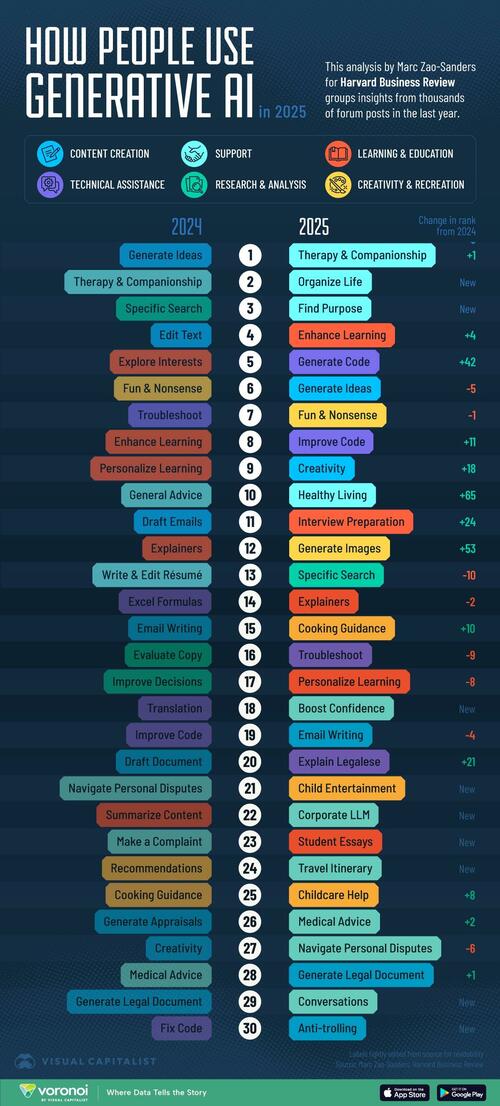

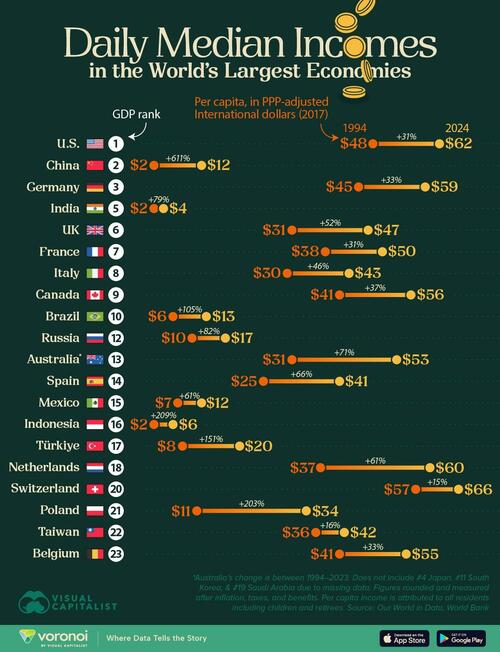
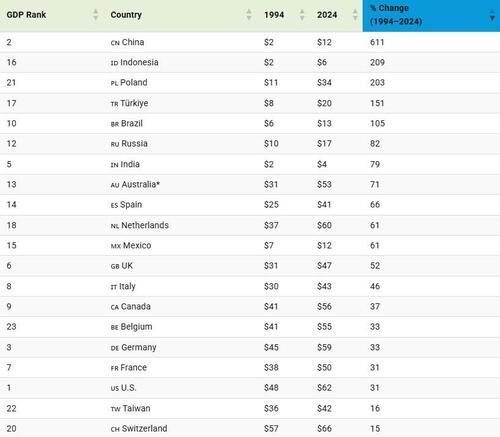

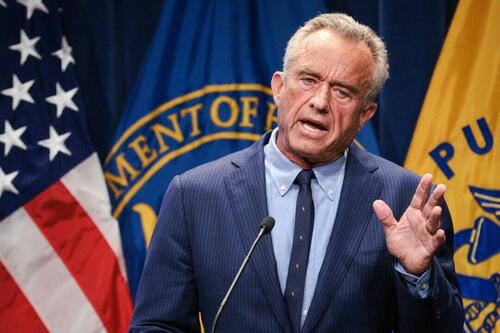


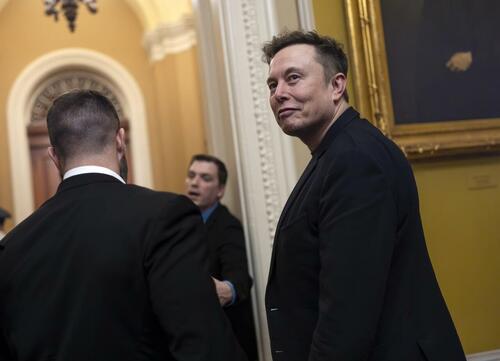
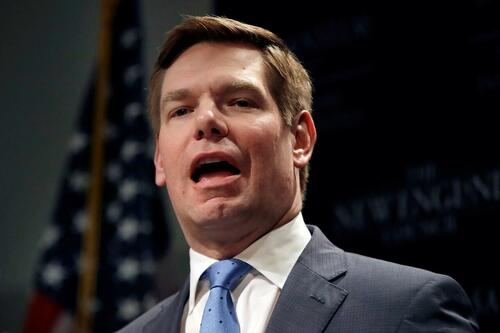

 Click to jump directly to our new Rancher-Direct section...
Click to jump directly to our new Rancher-Direct section...
















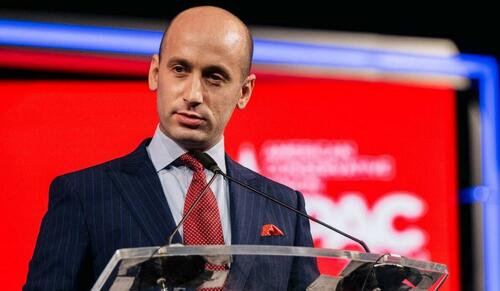

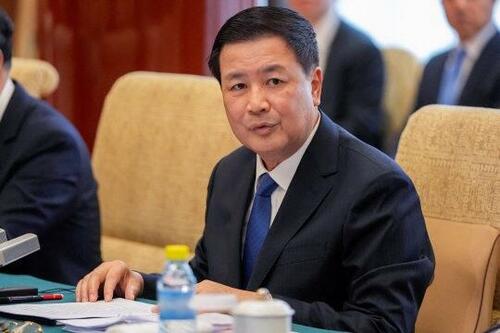

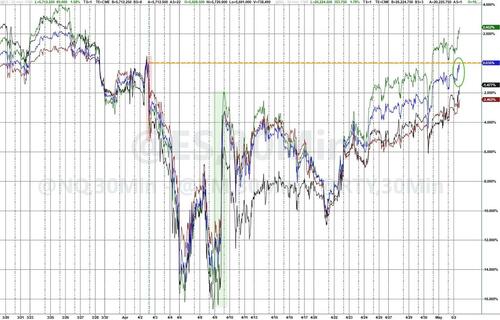
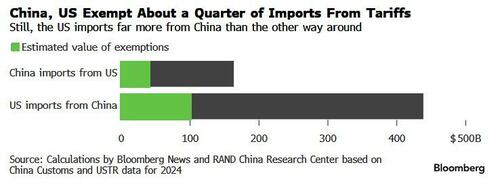
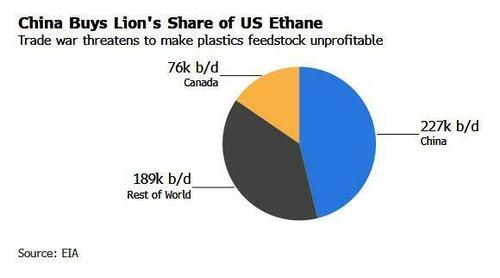
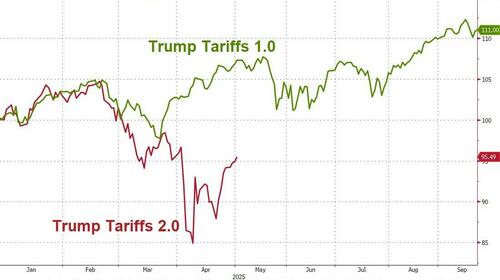
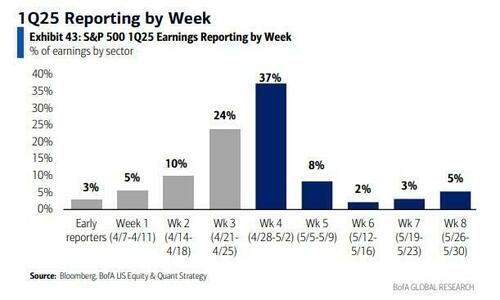


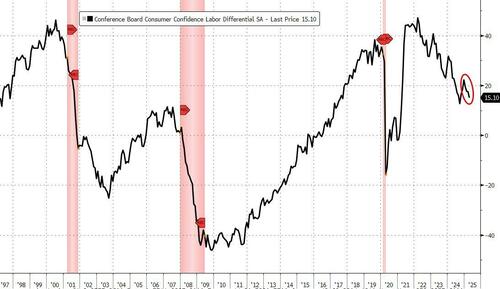
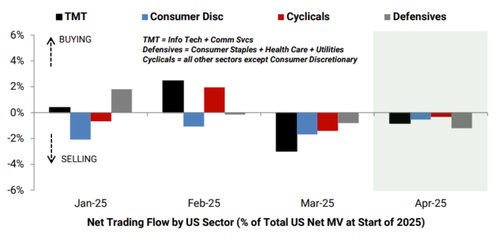
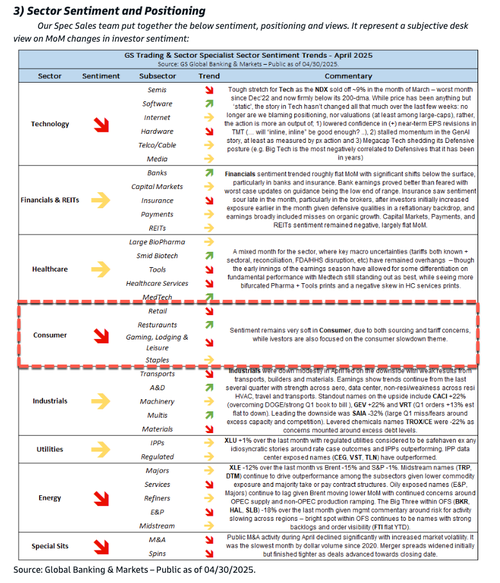

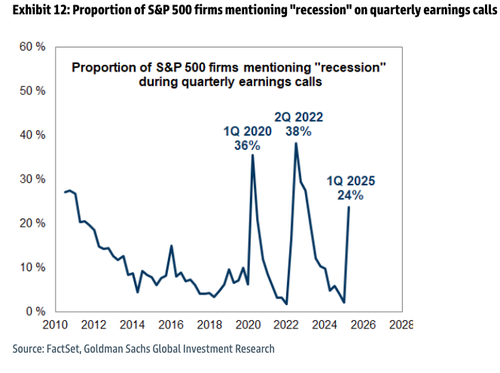

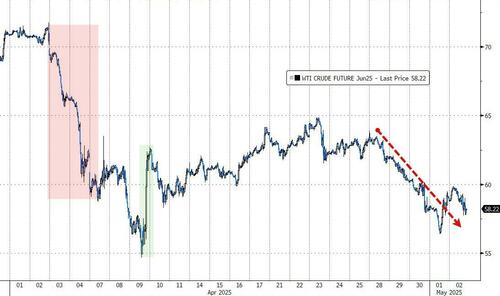
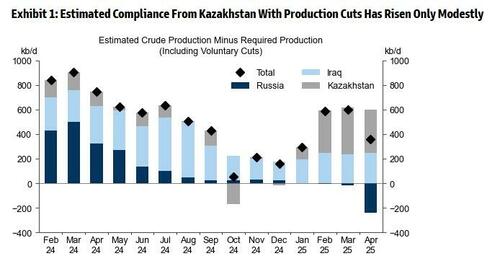
Recent comments